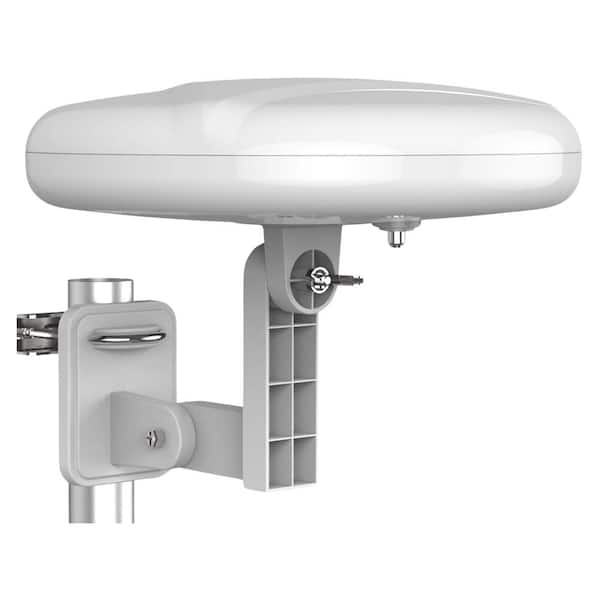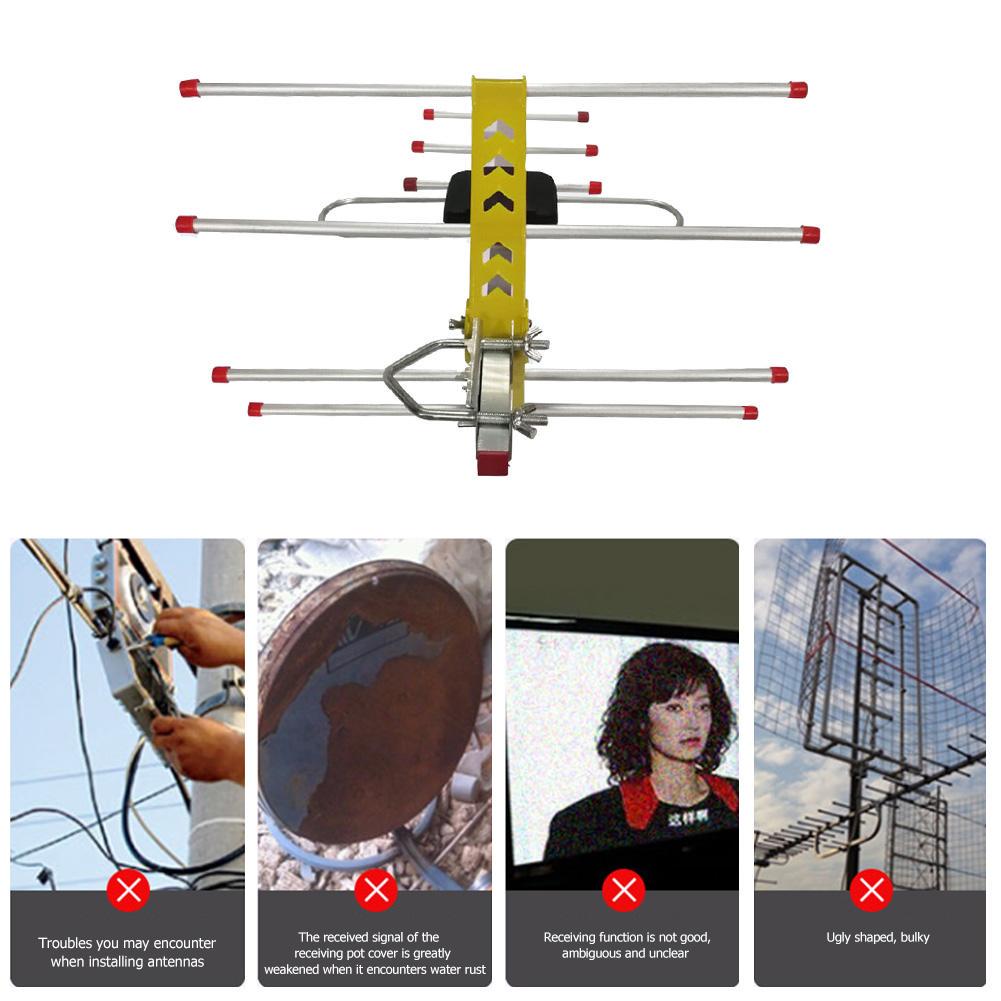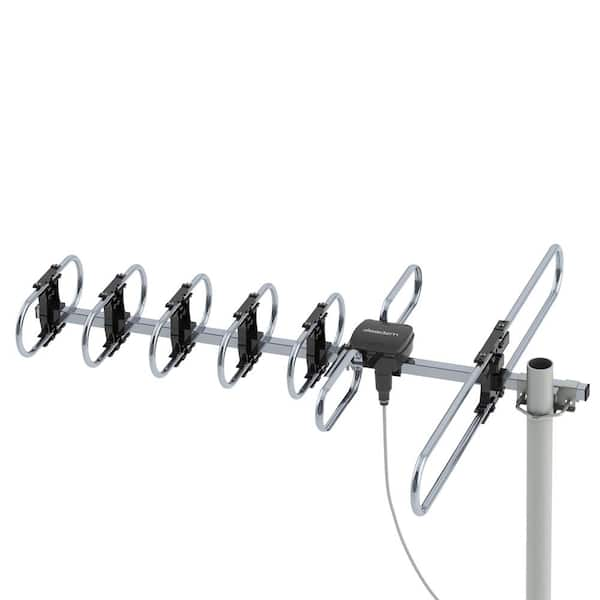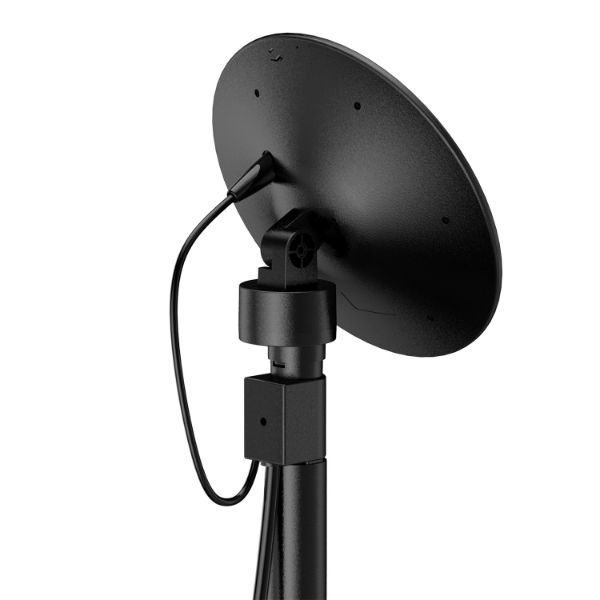Outdoor Tv Antenna 100 Mile Range

In an era dominated by streaming services and on-demand content, a surprising resurgence is occurring: the rise of the over-the-air (OTA) antenna. Specifically, antennas boasting a 100-mile range are experiencing a surge in popularity, fueled by a desire for free, high-definition television and a growing dissatisfaction with the increasing costs of subscription services.
But do these antennas truly deliver on their promises, and are they a viable alternative for cord-cutters seeking to maximize their viewing options without breaking the bank? The answer, as with most technological advancements, is nuanced and depends heavily on a variety of factors.
The Allure of Free TV: Cutting the Cord and Saving Cash
The primary driver behind the renewed interest in OTA antennas is simple: cost savings. The average household spends a significant portion of its budget on cable or satellite TV subscriptions, often exceeding $100 per month, according to a report by Nielsen.
With the proliferation of streaming platforms, many consumers are finding themselves paying for multiple services to access the content they desire, leading to subscription fatigue and a search for more affordable alternatives.
A 100-mile range antenna, purchased for a one-time fee, offers access to local broadcast channels in HD quality, completely free of monthly charges. This proposition is particularly appealing to budget-conscious viewers and those living in areas with limited broadband options.
Understanding the 100-Mile Range Claim: Reality vs. Marketing
While the promise of receiving channels from up to 100 miles away is enticing, it's crucial to understand the limitations and factors that affect antenna performance. The stated range is a theoretical maximum, calculated under ideal conditions, which rarely exist in the real world.
Several factors can significantly impact the effective range of an antenna, including terrain, obstructions, and transmitter power. According to the Federal Communications Commission (FCC), signal strength decreases with distance, and obstacles such as buildings, trees, and hills can block or weaken the signal.
Furthermore, atmospheric conditions and the presence of electromagnetic interference can also affect reception quality. Consumers should be wary of overly optimistic marketing claims and conduct thorough research before purchasing an antenna.
Key Factors Affecting Antenna Performance:
- Terrain: Flat, open terrain generally allows for better signal propagation.
- Obstructions: Buildings, trees, and hills can block or weaken signals.
- Transmitter Power: Higher power transmitters provide stronger signals and greater range.
- Antenna Placement: Higher antenna placement, such as on a roof, improves signal reception.
- Atmospheric Conditions: Weather patterns and electromagnetic interference can affect signal quality.
Choosing the Right Antenna: Indoor vs. Outdoor, Amplified vs. Non-Amplified
Selecting the appropriate antenna is critical to maximizing reception quality. There are two primary types of antennas: indoor and outdoor. Indoor antennas are generally easier to install but offer limited range compared to outdoor antennas.
Outdoor antennas, particularly those mounted on rooftops, provide the best performance, especially in areas with weak signals or numerous obstructions. Amplified antennas incorporate a built-in amplifier to boost signal strength.
However, amplification is not always necessary and can sometimes worsen reception by amplifying noise and interference. The choice between amplified and non-amplified antennas depends on the specific location and signal conditions.
The Digital TV Transition and Channel Repacking: A New Landscape
The transition to digital television (DTV) in 2009 and the subsequent channel repacking process have significantly impacted OTA broadcasting. Channel repacking involved reassigning frequencies to different broadcasters to free up spectrum for mobile broadband services.
This process has resulted in some channels moving to different frequencies, requiring consumers to rescan their antennas to receive the updated channel lineup. The FCC provides resources and information on channel repacking and how to rescan antennas.
Furthermore, DTV offers superior picture quality compared to analog broadcasting, making OTA antennas an attractive option for accessing high-definition content.
Beyond the Broadcast Networks: Exploring Additional Content
While the primary appeal of OTA antennas is access to major broadcast networks such as ABC, CBS, NBC, and Fox, many consumers are discovering a wealth of additional content available through subchannels. Subchannels are digital channels broadcast alongside the main network channels.
They often feature niche programming, classic television shows, and local news and weather updates. Websites like RabbitEars.info provide comprehensive listings of available OTA channels and subchannels in specific areas.
This expanded content offering enhances the value proposition of OTA antennas, providing viewers with a diverse range of viewing options beyond the traditional broadcast networks.
Future Trends and the Evolution of Over-the-Air Television
The future of OTA television looks promising, with advancements in antenna technology and the potential for new broadcasting standards. ATSC 3.0, also known as NextGen TV, is a new broadcasting standard that promises improved picture quality, enhanced audio, and interactive features.
While adoption of ATSC 3.0 is still in its early stages, it has the potential to revolutionize OTA television and make it even more competitive with streaming services and cable TV. The ongoing evolution of digital television technology suggests a continued role for OTA antennas in the media landscape, offering a cost-effective and high-quality alternative to traditional subscription services.
As subscription costs continue to rise and consumer preferences evolve, the humble antenna may well become an increasingly important tool for accessing free, over-the-air content, proving that sometimes, the best things in life really are free.


















